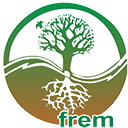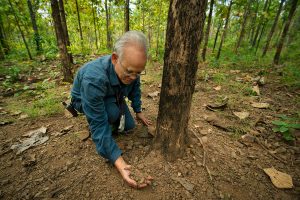Prof. Dr. Bao Huy
After overexploitation in previous decades, the deciduous dipterocarp forest (DDF) became poor in timber and were subsequently converted to industrial crops such as cashew, rubber and acacia hybrids. This conversion failed because these industrial crops could not adapt to the extreme ecological environmental conditions of DDFs and destroyed the unique dipterocarp forest ecosystem.
Enrichment planting of teak in the degraded DDFs offers the potential for additional economic value from planted teak trees, while rehabilitating the ecological, environmental and biological functions of the unique dipterocarp forest ecosystem.
Teak has been suitable for the extreme ecological environmental conditions of the degraded DDFs such as marginal soil with a high ratio of gravel, high temperature, drought, wildfire in the dry season, and low rainfall. Teak is also considered a native species of this forest type in Đắk Lắk Province, Vietnam.
Photo: Teak grows well on marginal soils with a high ratio of gravel in the degraded deciduous dipterocarp forest (Photo: Bao Hung, 2022)
Download the summary and images
With meaningful results of this study, we are calling for funding to widely apply the results in the Central Highlands, Viet Nam.
Contact: Bao Huy, Prof. Ph.D.
Independent Consultant on Forest Resources & Environment Management Consultancy (FREM).
Email: baohuy.frem@gmail.com
Tel.: +84 98 308 4145
Add.: 06 Nguyen Hong, Buon Ma Thuot City, Dak Lak Province 630000, Viet Nam.
Shifting Cultivation and Rehabilitation of Natural Forest Ecosystems in the Central Highlands of Vietnam
In M. Cairns (ed.) Farmer Innovations and Best Practices by Shifting Cultivators in Asia-Pacific, CAB International (CABI), Boston, MA, USA, pp. 360 – 378.
 DOI: 10.1079/9781800620117.0018
DOI: 10.1079/9781800620117.0018
Author: Bao Huy
Abstract: Shifting cultivation, also known as swidden agriculture or pejoratively as slash-and-burn farming, is an ancient farming practice that remains the dominant and traditional land use in the mountainous regions of Southeast Asia, providing a livelihood for most ethnic minorities inhabiting these upland areas. However, it faces challenges due to the introduction of foreign farming systems. This study examines the recovery of forest structure and soil fertility and changes that occur over different fallow periods, serving as a basis for proposing improved upland farming practices among ethnic minorities in Vietnam’s Central Highlands. Fifteen nested circular plots, comprising two subplots of 1000 sq. m and 100 sq. m, were established in five fallow and primary forest areas. The height distributions were organized, and the dominant forest tree species were identified using the importance value index. Soil properties were analyzed through three soil samples collected within each plot. Additionally, a literature review was conducted for an overview and discussion of shifting cultivation. Local people were surveyed and interviewed to describe their swidden practices, record indigenous knowledge, and observe trends in changing fallow-land use under market-driven agricultural development conditions. Following the cultivation of swidden crops in evergreen broad-leaved forests, fallow periods that last for more than 10 years are likely to recover and stabilize soil fertility, forest structure and the composition of dominant tree species. If the fallowed land remains unused after 10 to 15 years, forest protection measures would ensure the successful rehabilitation of the original tropical natural forest ecosystems. Alternatively, swidden-based agroforestry systems would be an appropriate approach to harmonizing the maintenance of traditional shifting cultivation with the current tendency to intensify the use of fallow land by converting it to monocultures of commodity crops.
Citation: Bao Huy (2023). Chapter 18: Shifting Cultivation and Rehabilitation of Natural Forest Ecosystems in the Central Highlands of Vietnam, in M. Cairns (ed.) Farmer Innovations and Best Practices by Shifting Cultivators in Asia-Pacific, CAB International (CABI), Boston, MA, USA, pp. 360 – 378. DOI: 10.1079/9781800620117.0018
SOCIO-ECONOMIC AND ENVIRONMENTAL SITUATION AT SURROUNDING VILLAGES OF OLAM’S BLACK PEPPER PLANTATION
Authors: Bao Huy, Nguyen The Hien, Ho Dinh Bao and Nguyen Thi Thao
Technical Report, Olam International Ltd., 2021, 89 pp.
Assessment for Developing Bu Nor Community Forest Enterprise (CFE)
Author: Bao Huy
FREM, RA (Rainforest Alliance), 2017
Gender, land use and land use change in Vietnam: Coffee as commodity driver of land use change in the Central Highlands of Vietnam.
Technical Report to IIED. World Agroforestry Centre (ICRAF), Hanoi, Viet Nam, 2015, 29p.
Authors: Delia C. Catacutan, Bao Huy, Van Thanh Pham and Rachmat Mulia.
Download report
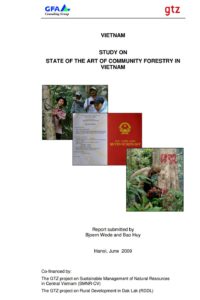 State of the Art of Community Forestry in Viet Nam
State of the Art of Community Forestry in Viet Nam
Authors: Bjoern Wode and Bao Huy
Publisher: GTZ, 2009, 104p.
Download book: State of the Art of Community Forestry in Vietnam
 A Review of the applicability of existing trees and forest characteristics prediction models to forest inventory in Vietnam and Nepal.
A Review of the applicability of existing trees and forest characteristics prediction models to forest inventory in Vietnam and Nepal.
A Literature Review Publisher: Finnish Forest Research Institute, ISSN: 1795-150X, ISBN: 978-951-40-2368-2
Download book: A Review of the forest prediction models in Viet Nam and Nepal
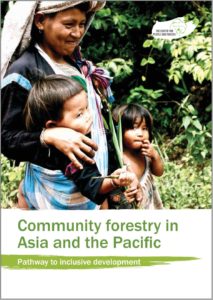 Community Forestry in Asia and the Pacific
Community Forestry in Asia and the Pacific
Authors: Sikor, T., Griten, D., Atkinson, J., Huy, B., Dahal, G.R., Duangsathaporn, K., Hurahura, F., Phavilay, K., Maryudi, A., Pulhin, J., Ramirez, M.A., Win, S., Toh, S., Vaz, J., Sokchea, T., Marona, S., Yaqiao, Z. Publisher: RECOFTC, Thailand, 2013, 99p
Download book: Community Forestry Landmark RECOFTC
Allometric equations at national scale for estimating tree and forest biomass in Viet Nam. Part B1: Equations for biomass of aboveground trees, branches and leaves biomass in Evergreen Broadleaved forests, and for aboveground biomass of six tree families in Evergreen and Deciduous forests.
Technical Report, 2014. UN-REDD, FAO
Author: Bao Huy
Download report
Tree allometric equations in Evergreen broadleaf forests in the South Central Coastal region, Viet Nam.
Technical Report, 2012. UN-REDD, FAO
Author: Bao Huy, Vo Hung, Cao Thi Ly, Nguyen Duc Dinh
Download report
Yield Table of Carnarium album Roeusch Plantation Forest in Lang Son, Bac Can and Quang Ninh Provinces, Viet Nam
Authors: Bao Huy and Dao Cong Khanh
Publisher: Kfw Project, MARD, 2008, 34p.
Download book: Yield Table of Canarium Kfw
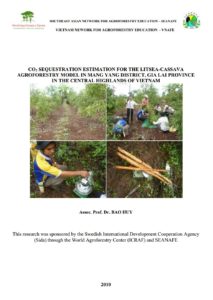 CO2 sequestration estimation for the Litsea – Cassava Agroforestry Model in Mang Yang District, Gia Lai Province in the Central Highlands of Viet Nam
CO2 sequestration estimation for the Litsea – Cassava Agroforestry Model in Mang Yang District, Gia Lai Province in the Central Highlands of Viet Nam
Author: Bao Huy
Sponsor: SIDA, ICRAF, SEANAFE, 2010, 44p.
Download report: Technical Report – CO2 sequestration in agroforesrty Litsea and Cassava_
SOME AGROFORESTRY PRACTICAL MODELS IN VIET NAM
Authors: Bao Huy et al.
Sponsor: SIDA, ICRAF, SEANAFE, 2008, 78p.
